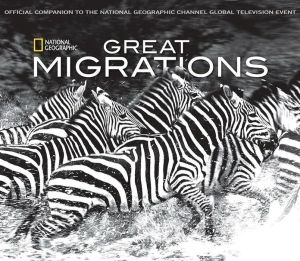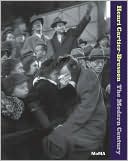Sahel: The End of the Road
In 1984 Sebastião Salgado began what would be a fifteen-month project of photographing the drought-stricken Sahel region of Africa in the countries of Chad, Ethiopia, Mali, and Sudan, where approximately one million people died from extreme malnutrition and related causes. Working with the humanitarian organization Doctors Without Borders, Salgado documented the enormous suffering and the great dignity of the refugees. This early work became a template for his future photographic projects...
Search in google:
"While art should speak for itself, Salgado's photography is first and foremost a documentary way of bearing witness to something else. His work is both an anguished cri de coeur and, although he professes not to be religious, something of a votive offering presented in the hopes of getting the attention of a world that sometimes seems to have fallen asleep."—Orville Schell, from the Foreword Publishers Weekly Shot over 15 months during 1984-1985 as a horrific famine raged across sub-Saharan Africa, Salgado's documentation of the Sahel region (including parts of Chad, Ethiopia, Mali and the Sudan) was one of his first projects as he transitioned from working economist to photographer. More than 50 prizes and many books and exhibitions later, this edition brings that early work into the States in book form for the first time. Each of the 80 or so b&w shots is given a full page with generous borders; that photos of people near death are beautifully composed and printed make for just two of their paradoxes. Orville Schell argues in his foreword that "[Salgado's] strategy is to pull us into the subject with visual seduction, and then once we are enthralled-or shocked, as the case may be-to educate us about the issue at hand." With the genocide and displacement of black Africans by their Arab northern compatriots in the Sudan currently leading to serious food shortages, Salgado's book remains at the very least a relevant call to action. Portions of the profits of the book will be donated to Doctors Without Borders. (Oct.) Copyright 2004 Reed Business Information.
"While art should speak for itself, Salgado's photography is first and foremost a documentary way of bearing witness to something else. His work is both an anguished cri de coeur and, although he professes not to be religious, something of a votive offering presented in the hopes of getting the attention of a world that sometimes seems to have fallen asleep."--Orville Schell, from the Foreword
ForewordSahel: Man in Distress / Orville SchellIntroductionTwenty Years Ago, and Later / Fred RitchinPhotographsCaptionsAfterword Salgado / Eduardo GaleanoBiographical Note Acknowledgments
\ Publishers WeeklyShot over 15 months during 1984-1985 as a horrific famine raged across sub-Saharan Africa, Salgado's documentation of the Sahel region (including parts of Chad, Ethiopia, Mali and the Sudan) was one of his first projects as he transitioned from working economist to photographer. More than 50 prizes and many books and exhibitions later, this edition brings that early work into the States in book form for the first time. Each of the 80 or so b&w shots is given a full page with generous borders; that photos of people near death are beautifully composed and printed make for just two of their paradoxes. Orville Schell argues in his foreword that "[Salgado's] strategy is to pull us into the subject with visual seduction, and then once we are enthralled-or shocked, as the case may be-to educate us about the issue at hand." With the genocide and displacement of black Africans by their Arab northern compatriots in the Sudan currently leading to serious food shortages, Salgado's book remains at the very least a relevant call to action. Portions of the profits of the book will be donated to Doctors Without Borders. (Oct.) Copyright 2004 Reed Business Information.\ \








